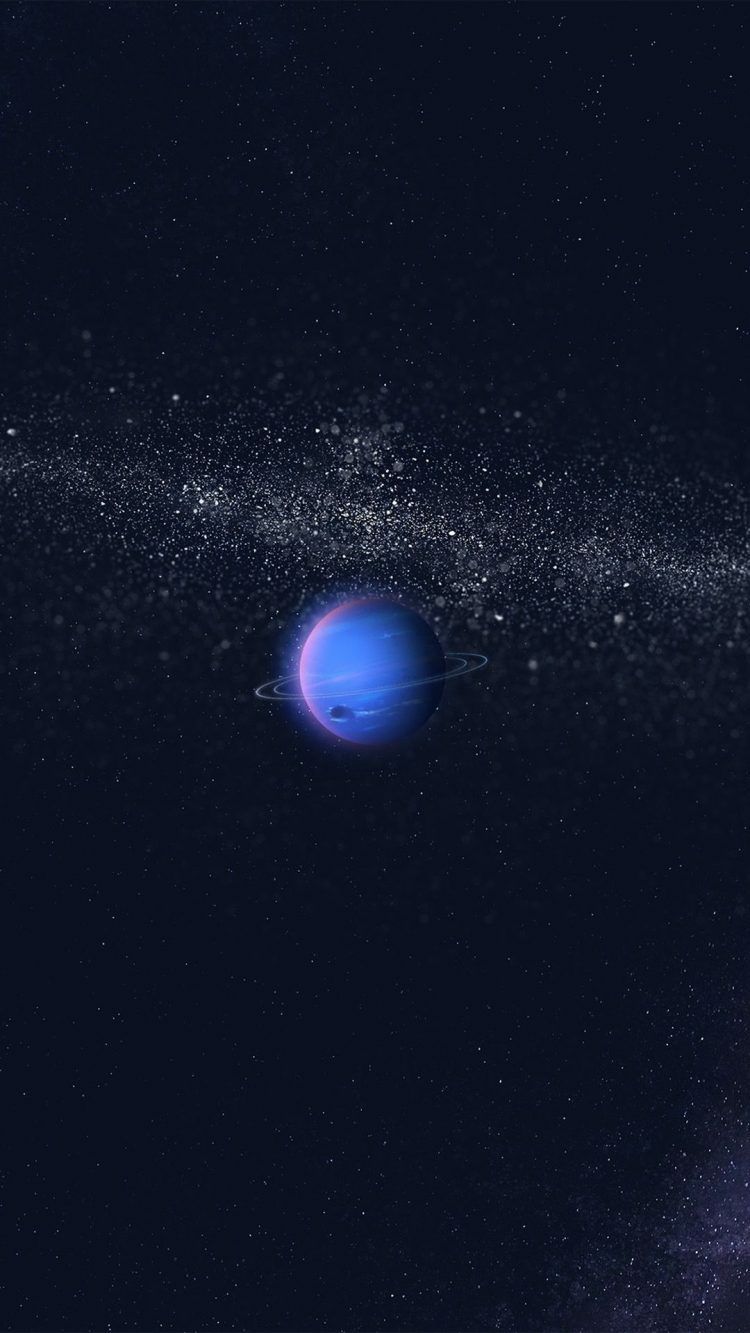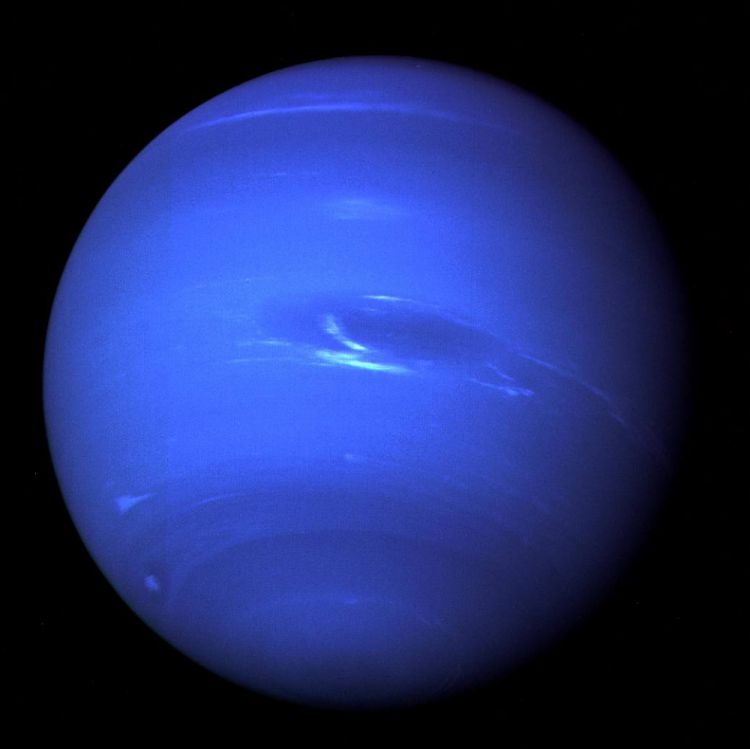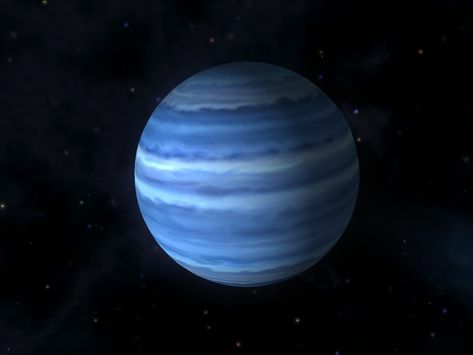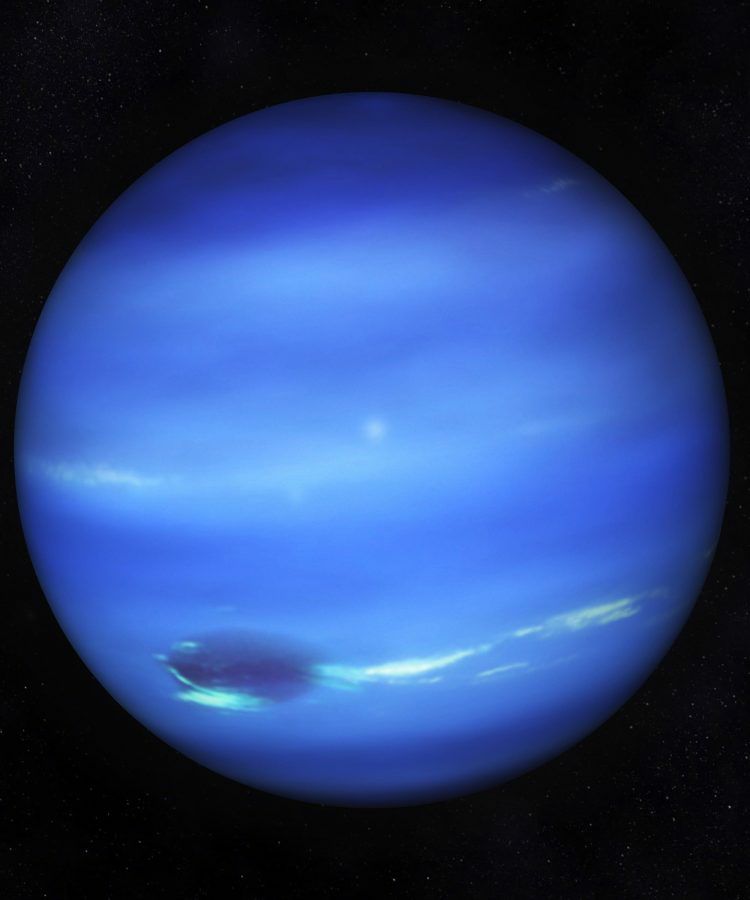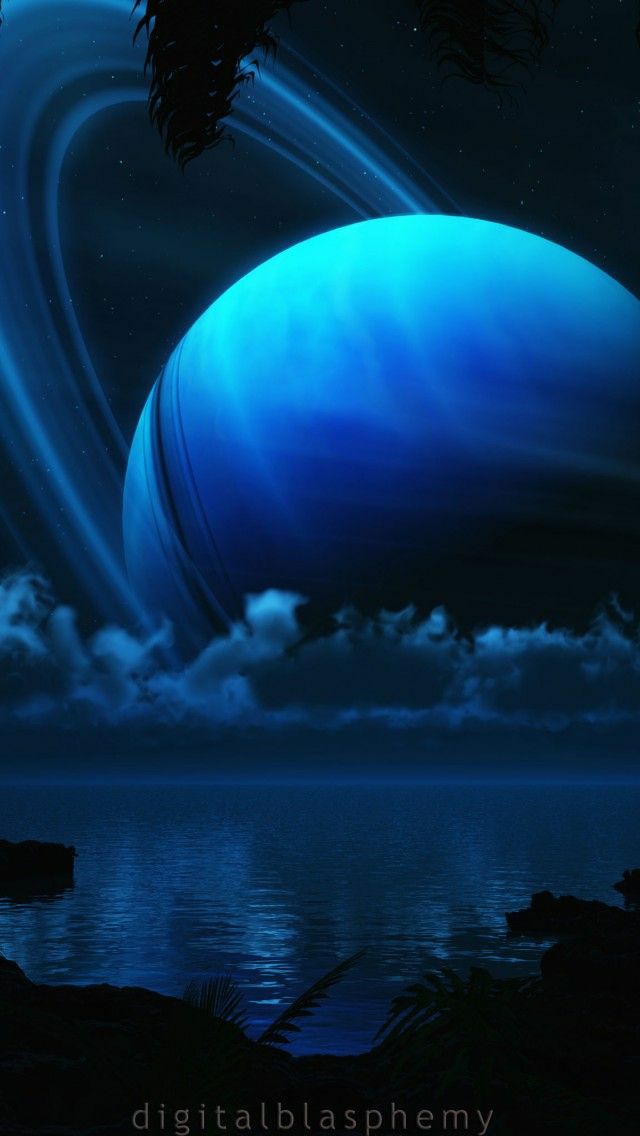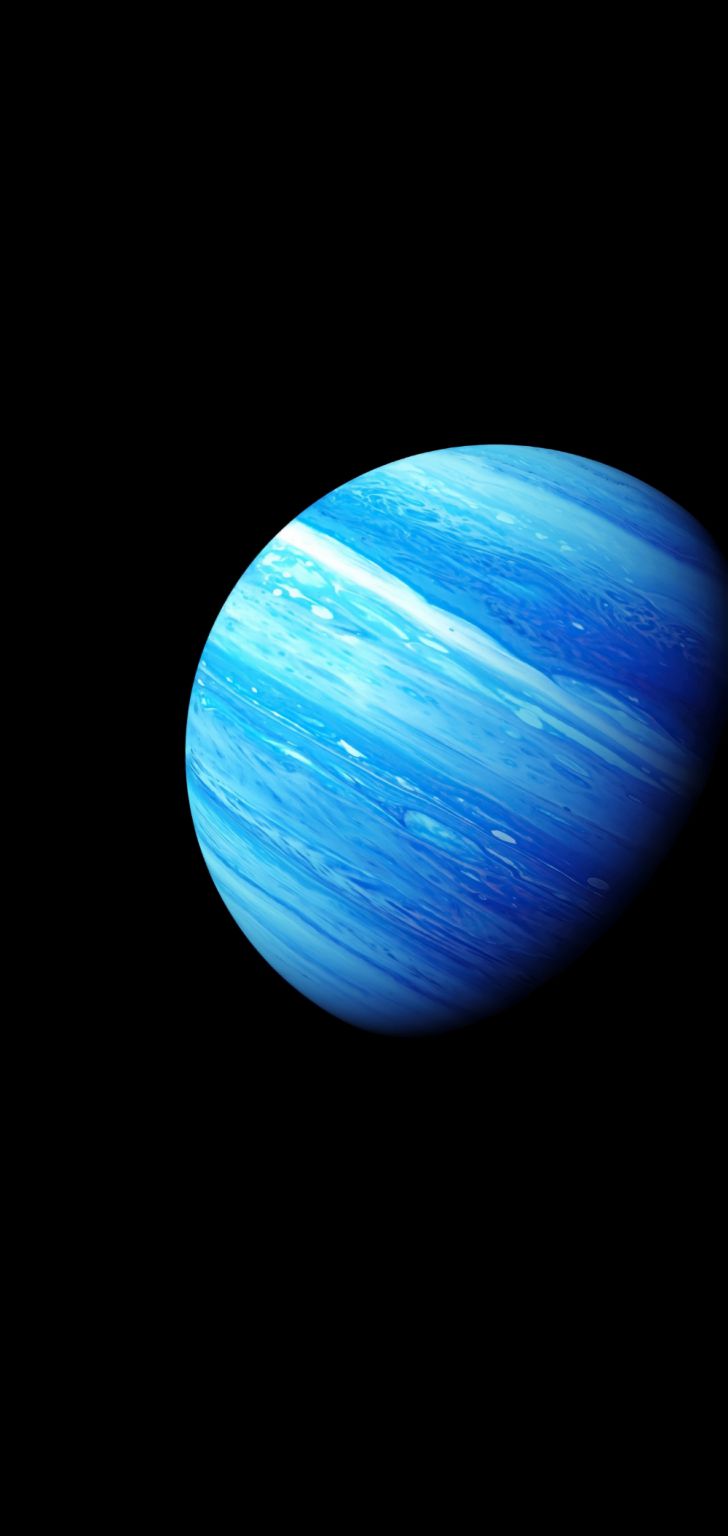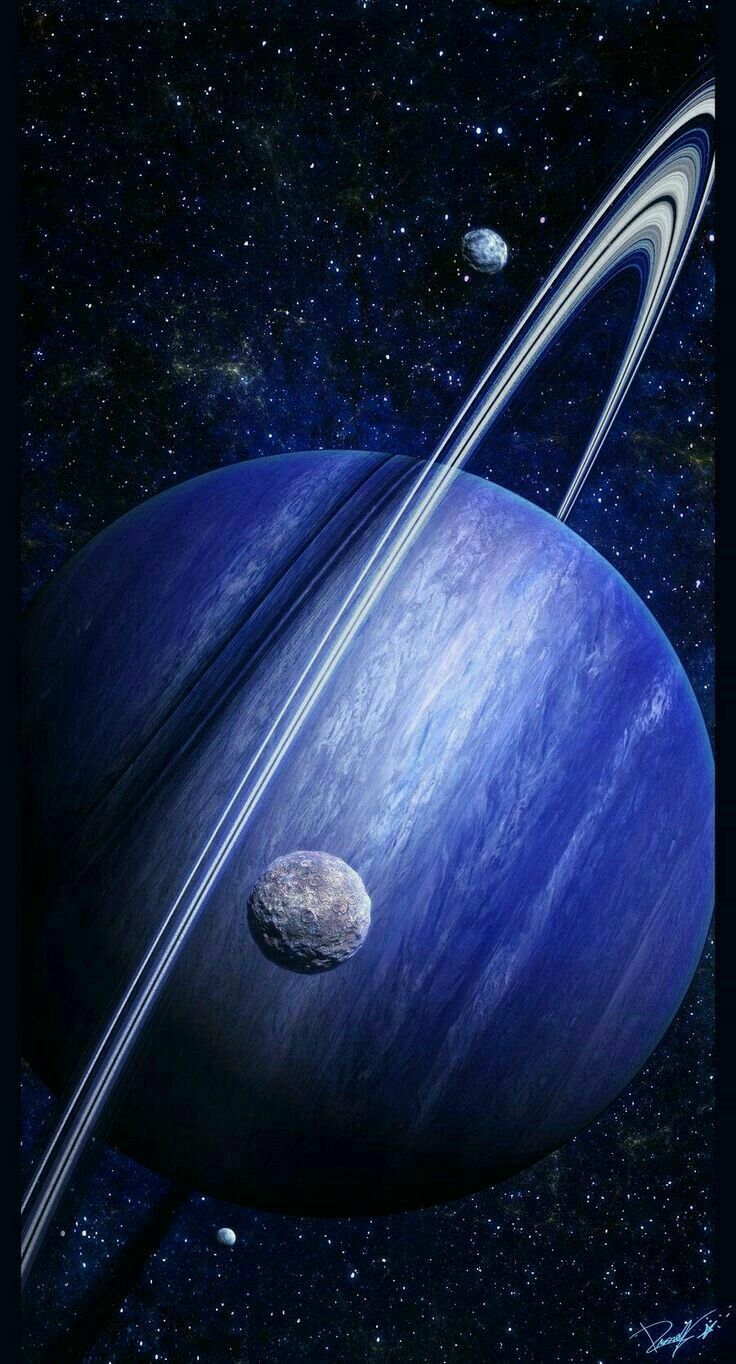Neptune.
Neptune is the eighth and farthest known planet from the Sun in our solar system. It was discovered by Johann Galle and Heinrich d’Arrest in 1846, using mathematical predictions made by Urbain Le Verrier. Neptune is named after the Roman god of the sea, which is fitting because it is a gas giant composed mostly of hydrogen and helium, with a deep blue color similar to the color of the ocean.
Neptune is the fourth-largest planet by diameter and the third-largest by mass. It has a radius of about 24,622 kilometers and a mass of 1.02 x 10^26 kilograms. It is also one of the four gas giants in our solar system, along with Jupiter, Saturn, and Uranus. Despite being the farthest planet from the Sun, it is not the coldest; that honor belongs to Uranus.
One of the most fascinating features of Neptune is its Great Dark Spot, a massive storm in the planet’s atmosphere that is similar to Jupiter’s Great Red Spot. However, unlike the Great Red Spot, the Great Dark Spot has not been observed in over a decade and may have dissipated. Another unique feature of Neptune is its 14 known moons, the largest of which is Triton. Triton is an icy moon that is believed to have been captured by Neptune’s gravity and is the only large moon in our solar system that orbits in the opposite direction of its planet’s rotation.
Neptune has been visited by only one spacecraft, Voyager 2, which flew by the planet in 1989. The data collected by Voyager 2 provided us with valuable insights into the planet’s atmosphere, magnetic field, and moons.
In terms of exploration, there is much left to discover about Neptune. One proposed mission is the Neptune Orbiter, which would study the planet’s atmosphere, magnetic field, rings, and moons in greater detail. Another mission, the Trident mission, aims to send a spacecraft to fly by Triton to study its geology, composition, and potential for habitability.
In conclusion, Neptune is a fascinating planet that has captured the imagination of astronomers and space enthusiasts for centuries. With its deep blue color, massive storm systems, and unique moons, Neptune continues to be a target for future exploration and discovery.
Hits: 2
